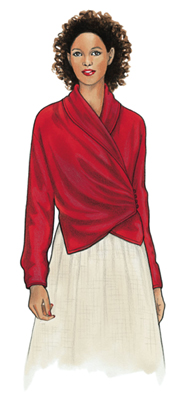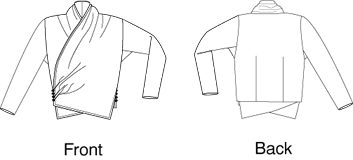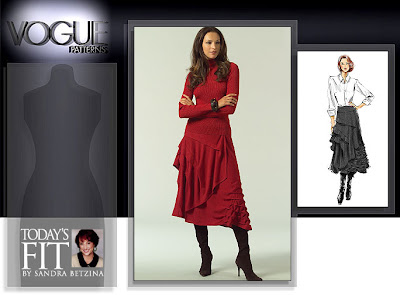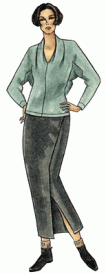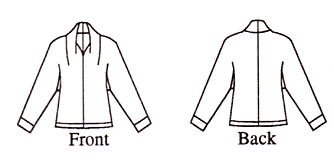One of my passions is dyeing fabric. I love love to dye fabric. I first experimented with fabric dyeing years ago in a Wearable Art class I took at Canada College. Later, when I started quilting, I became obsessed with gradation dyeing. I bought muslin by the bolt and dyed yards and yards, back in the day. Later, when my children attended a Waldorf kindergarten, I used the same Procion Dyes to dye silks, particularly 36" silk scarves, which are de rigeur playthings for every Waldorf child. I donated many many colorful silk scarves to school fundraisers and I still have a large bag of these in my garage.
Now, I hate to call myself lazy, but I have a certain philosophy regarding... economizing my effort. Simplify simplify. I long ago gave up hand dyeing and started dyeing fabrics in my washing machine. It's so much easier!
If you have been intimidated by dyeing in the past because of all the calculations and effort, really, it doesn't have to be that hard. Yes, if you are going into business and want to produce consistent results, you will have to weigh your fabric, weigh your dyes, estimate your water, make precise calculations, use a consistent fabric, and so on. But, for those of us who want to dye the odd piece of fabric, who cares?
However, before beginning, you need to get into the correct mindset. If you go into this wanting a specific shade or a specific color, you should proceed with caution. It's best to approach this endeavor with a spirit of adventure and open mindedness – "close enough is good enough." With this attitude, you will find that it's fun. It's really really fun. If you hate the results, you can over dye the fabric again, use it for testing patterns, or gift it to someone else who can appreciate a hand dyed fabric in that particular shade. :)
I started machine dyeing using the
method on the
Dharma Trading website (my favorite vendor for procuring my supplies). I thought I would walk you through my process, so you can see where I have employed my shortcuts on their method.
Why
Fiber Reactive Procion dyes? Well, these were my first introduction to dyes because that's what my teacher, Mary Lou Lange, used. She used them because she had good results with them. They are colorfast, easy to use in cold water, and they come in lots of pretty colors. They come in powder form and last forever. I am still using dyes I bought 15 years ago with no degradation or other problems.
You don't have to start with white or natural-colored fabric. If you have a fabric that you like, is a natural fiber (or partly natural), but you hate the color, why not try dyeing it? Except in this case, it's called over-dyeing. You just might love the results.
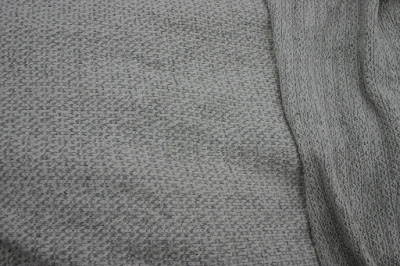
In my case, I had a very uninspiring 100% cotton knit in an oatmeal color with light grey flecks. Blech. This was not a high quality fabric and had been sitting around the fabric store for a long time. I bought a bit over 2 yards for $2 a yard, thinking I could use it for a wearable muslin. It took me awhile to decide what color to dye it. I have quite a few dye colors and don't want to buy any more, though if I did, I think I would have to get that new Oxblood Red color. (By the way, I have NO affiliation with Dharma or Procion.)
I was "feeling" a berry color as I am often told how flattering it is on me, but the only reds I had on hand were Chinese Red and Fire Red, neither of which were calling to me, so I decided to experiment and mix the Fire Red (#10) with a bit of Navy Blue (#24). If you look at the
color chart you will see that some colors have an asterisk beside them and some have two. This means that you need more of those dyes to achieve the saturation shown on the sample chart. One asterisk means twice as much dye and two asterisks means four times as much.
You also have to take the type of fabric into account. Silk
loves dyes and absorbs them readily, as does rayon. Cotton can be a bit more problematic. A long-staple cotton can take dyes well, unless it has been treated by something that will inhibit the dye, such as a permanent press finish, but some cottons that are more "slubby", made from a shorter staple thread (like my knit) can be more resistant to accepting the dye.
This is where calculations might intimidate you. Don't let them. I had two-plus yards of a cotton knit plus one diaper. Why a diaper? Well, for 17 years now I have been using cloth diapers as rags. When I make up a dye bath, I throw in a diaper or two, or maybe a pillowcase, just because it makes me smile. :) I don't do more than that because I don't want those extra fabrics to "steal" too much of the dye.
Anyway, for such a small amount of fabric, I use the Small setting on my washer. (You do need a top-loading washing machine for dyeing fabrics because the fabric needs to be submerged at all times. It's why I will never buy a front loading washing machine.)
A note about using powdered dyes: you want to be careful around the undissolved dye. You do not want to be inhaling this stuff. When I used to do a lot of dyeing, I would wear a mask and gloves. Now that I dye fabrics very very rarely, I am more casual about these precautions. However, once I open the dye container, I hold it away from my face, and breathe very shallowly during the actual slurry-making process. Once I have measured the dyes into the cup, I place the lid firmly back on the dye container and place it back on the shelf. I do not wait and risk a possible spillage. Once the dye is mixed and added to the dye bath, I wash down the area where I was measuring the dye. Any residual grains of powdered dye can be very problematic the next time I wash a load of light colored clothing. :) I also immediately wash the cup and spoon used to mix the dye.
The following steps describe how to create a fabric similar to mine:
- Assemble your tools and supplies: Procion Dyes in your chosen color, salt, soda ash fixer, fabric, washing machine, empty gallon jug (for mixing salt water and soda ash solution), cup (for mixing dye), spoon (I use a standard plastic spoon). Optional: urea, synthropol, mask, gloves.
- Prewash and dry the fabric to remove sizing, dirt, etc. You can use synthropol or you can wash it as you normally do.
- Dissolve the salt in warm water. I used one cylindrical carton of Morton's salt from the grocery store for this project, which is about 2.5 cups. You might notice that the instructions call for non-iodized salt. I have dyed hundreds of yards over the years with regular iodized salt and had no problems whatsoever, but if you have non-iodized, you might want to use that for "best results." I would be curious to know how non-iodized salt improves the process.
- Set your washer to a Small load (for this small amount of fabric, I've also used extra large loads for large amounts of fabric) and Warm/Cool. Start the cycle so that the tub begins to fill.
- Add the dissolved salt to the washing machine.
- Mix your dye. In my case, I measured three heaping spoons (using a regular plastic spoon) of Fire Red (#10) into a cup. Had I wanted a very deep color, I would have used twice as much since this is an asterisk'd color, but I was economizing on my dye. To that, I added one half of a heaping spoon of Navy Blue (#24). (It was probably about 1.5 teaspoons by Imperial measure.) I then added a small amount of warm water and stirred with the plastic spoon to make a slurry. I then added a bit more water and stirred some more. Continue adding warm water in small increments until the dye is completely dissolved. For years I used plain warm water, but if you first dissolve urea into that warm water, it can minimize lumping. You do not want any lumps. If in doubt, strain the solution through a piece of silk or a coffee filter. Once the dye is dissolved, I add additional water – in total, I add about 1 cup of warm water to the dye mixture.
- Add the dissolved dye to the washing machine.
- Let the machine agitate for a minute or two.
- Add the fabric to the machine.
- Re-set the machine to start from the beginning of the cycle. My machine has a 15 minute agitation cycle. You want to agitate the fabric for 20 minutes before adding the soda ash solution, so I set a separate timer for 15 minutes to remind myself to re-set the machine to the beginning of the cycle before it empties out my precious dye bath.
- While the fabric is agitating, mix up the soda ash solution. The soda ash is essential to this process – it "fixes" the dye to the fabric in a chemical bond – this is why the dye is so colorfast. I added roughly 1/3 cup (I didn't bother measuring) to my gallon jug and then filled it about halfway with warm water. Put the lid on and shake it up to thoroughly dissolve.
- Once the fabric has agitated for 20 minutes, start adding the soda ash solution. You may notice that Dharma recommends doing this over a 15 minute period. This is too tedious for me, so I add it over a 2 minute period: I add some, let it agitate, add some more, let it agitate, add the rest.
- The fabric needs to agitate for 30 - 60 minutes, depending on how saturated you want the results to be. For this oatmeal fabric, I agitated for over 60 minutes. I take my timer with me everywhere I go in the house so I don't forget to re-set the washer before it empties.
- After the fabric has agitated the desired length of time, let the washing machine finish the cycle.
- Wash out the residual dye. I usually leave the fabric in the washer and put it through one or two regular cycles, with detergent or synthropol. (I typically prewash the fabric in regular detergent and use synthropol for the post-dyeing cycles.) Dry the fabric as desired. (I throw it into the dryer.)
To be on the safe side, after machine dyeing, I wash only dark loads for two or three loads. I've never had a problem, but I like to be safe. :)
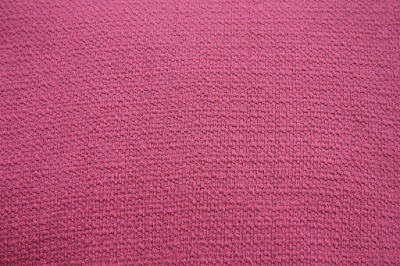
Voila. I will use this berry-colored fabric to test out one of the new patterns in my pile, like maybe the Fuji Mountain top. :)







